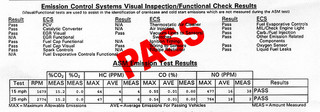
Despite horror stories, car makers on target to meet CO2 targets easily
EU targets for reducing carbon dioxide emissions from cars are too easy and not providing enough of an incentive for car makers. That is the message from T&E’s annual report "How Clean are Europe’s Cars?" published earlier last month.
[mailchimp_signup][/mailchimp_signup]
It also finds worrying evidence that car makers are making CO2 savings by manipulating them to pass type approval tests, which in turn means ‘improvements’ in fuel consumption are not benefiting drivers.
The 2012 report is the seventh annual statement since T&E broke an information deadlock with its 2006 publication How Clean are Europe’s Cars? – until then, car makers would not release details about emissions from new cars for individual companies, only industry-wide averages. The initial report added to the pressure that led to the first obligatory CO2 emissions standards for new cars agreed in 2009, and this year’s update will contribute to discussion about an obligatory emissions limit for 2020 and beyond.
The 2012 report says car makers are very close to the 130 g/km target they have to meet by 2015, and as this is based on 2011 figures, they were effectively 4% short of the target with four years still to go. In addition, the figures quoted do not allow for controversial legal devices car makers can use such as ‘eco-innovations’ and ‘supercredits’ that reward investment in cleaner technologies, so in practical terms, the car makers are nearly at their target already.
A new feature of this latest How Clean are Europe’s Cars? report is that it examines how easy it would be for manufacturers to hit the 2020 target of 95 g/km. It shows that Europe’s car makers are in a better position than most of their Asian competitors, and it will be much easier for the car industry to meet the proposed targets than it has claimed.
T&E director Jos Dings said: ‘These findings clearly show car makers were seriously exaggerating in 2008 when they claimed that the 130g/km emissions target was “unaffordable”. Many companies are reporting record profits, and the horror stories that obligatory limits would bankrupt Europe’s car industry have been shown to be ludicrous. The industry has cried wolf too often. This report shows manufacturers do not need flexibilities such as “supercredits” to meet their 2020 target as they claim.’
The report also finds evidence that car makers are ‘optimising’ the way they put cars through official tests, and that some emissions reductions are due to such tricks rather than to genuine improvements (see panel). T&E’s clean vehicles manager Greg Archer said: ‘Test results do not reflect real-life driving conditions and the difference is getting bigger as carmakers manipulate the tests. We now need to concentrate on how the problem can be properly tackled.’
